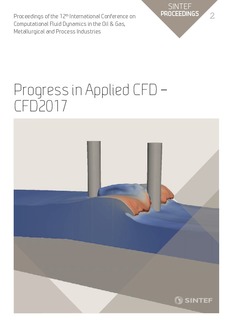| dc.description.abstract | Data assimilation methods were introduced to reduce production costs and to optimize processes in different industrial fields, such as oil & gas reservoir industry or transport of multiphase flows in pipelines. In flow assurance, these methods, called also soft-sensing techniques, allow to avoid the use of expensive and complex multiphase meters to measure some flow characteristics. Moreover, they allow the estimation of some flow parameters, whose actual values are unknown. Using these techniques, flow meters may be substituted by numerical simulations that solve a real-time dynamic model.
Among data assimilation methods, sequential filtering techniques allow flow estimation using a mathematical recursive filter where the estimated state of the physical model is updated in real-time through a comparison with few available and easy to obtain measurements of the actual system. If an explicit matrix structure of the model is available, the Extended Kalman filter (EKF) can be used as a recursive filter; otherwise, in the case of a more complex physical model, the Ensemble Kalman filter (EnKF), that is a stochastic extension of the original Kalman filter, can be used in combination with a numerical code to estimate various pieces of information of a multiphase flow in pipe.
Previous Authors (see Gryzlov et al. (2010)) used the Extended or the Ensemble Kalman filter in combination with the simplified one-dimensional no-pressure wave and drift-flux models to estimate the inlet flow rate or some correlation parameters in liquid/gas twophase flow
. In this work, the application of the Ensemble Kalman filter to the more complex Two-Fluid model for two-phase flow is investigated. The possibility to extend flow rate estimations to simulations where a flow regime transition from stratified to slug flow occurs, simulated with a one-dimensional slug capturing numerical code previously developed, is shown. The estimation of the pipe diameter by the real-time soft-sensing technique is performed in order to show the possibility of evaluating the presence of possible pipe restrictions or obstructions along the pipe due to wax deposition, solid phase scaling or other similar processes, without the use of ad-hoc physical model or invasive examination of the pipe. All the measurements used in this work for the soft-sensing process are obtained from previous numerical simulations of artificial actual systems kept as reference. | nb_NO |
